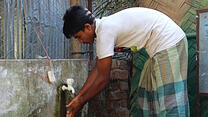The International Rescue Committee (IRC) has received funding from the World Bank to Support Beirut's Immediate Social Recovery Services. The IRC will implement material measures and actions so that the project is implemented in accordance with the World Bank Environmental and Social Framework (ESF) and the Environmental and Social Standards (ESS).
The relevant ESSs which apply to the project are: (i) ESS1 Assessment and Management of Environmental and Social Risks Impacts, (ii) ESS2 Labor and Working Conditions, (iii) ESS3 Resource efficiency and pollution prevention and management, (iv) ESS4 Community Health and Safety, and (v) ESS10 Stakeholder Engagement and Information Disclosure. The IRC is responsible for compliance with all requirements of the ESCP during the project life-cycle and will monitor the implementation of specific measures and actions conducted by identified other institutions and stakeholders.
The IRC has prepared an Environmental and Social Commitment Plan (ESCP) which sets out material measures and actions, specific documents or plans, as well as the timing for each of these. Based on the World Bank's ESSs that apply, the IRC has prepared the following instruments together with the Environmental and Social Commitment Plan:
- Socio-economic Assessment
- Stakeholder Engagement Plan
- Labor Management Procedures
- Medical Waste Management Plan
Environmental and Social Commitment Plan (ESCP):
The International Rescue Committee will implement the World Bank funded project: “Support for Social Recovery Needs of Vulnerable Groups in Beirut” (the Project), and will implement material measures and actions so that the Project is implemented in accordance with the Environmental and Social Standards (ESSs) of the World Bank. This Environmental and Social Commitment Plan (ESCP) sets out material measures and actions, any specific documents or plans, as well as the timing for each of these and will also comply with the provisions of any other E&S documents required under the ESF and referred to in this ESCP, such as the Socio-economic Assessment, the Stakeholder Engagement Plans (SEP), the Labor Management Procedures (LMP) and the Medical Waste Management Plan and the timelines specified in those E&S documents.
Stakeholder Engagement Plan (SEP):
During the months of June and July 2021, the IRC identified a list of experts and stakeholders. 23 organizations have been targeted in the experts consultations including local and international NGOs.
The questions evolved around the three different components of the project to collect information on the current priorities in each sector, the specified actors’ existing campaigns and strategies, shelters, existing systems and mechanisms, the most relevant actors to consider for this project and their own budget estimation for the accomplishment of some key outcomes.
Through these consultations, the IRC was able to learn more about the main actors under GBV, CP, Persons with Disabilities, Elderly and Mental Health, their activities, expertise, ongoing initiatives, coordination, and uncovered needs. The outcomes of the consultation fed into the completion of the budget, stakeholders’ identification, activities, target and expected results of the project.
Socio-Economic Assessment (SEA):
The purpose of the socio-economic assessment is to provide an analysis of the socio-economic conditions of the individuals and groups affected by the project, and to provide an overview of the demands and needs of the targeted beneficiaries.
Medical Waste Management Plan (MWMP):
Since medical waste is considered hazardous to users, healthcare workers, community and environment, the IRC has developed a Medical Waste Management Plan with a main objective to reduce disease burden and ensuring proper health spending. The plan includes delegation of responsibilities, involvement of occupational health and safety staff, considering of Infection Prevention and Control standards, waste minimization and segregation, the development and adoption of safe and environment-friendly technologies, and staff capacity building.
Labor Management Plan (LMP):
The purpose of the Labor Management Plan is to identify the main labor requirements and risks associated with the project, and help the IRC to determine the resources necessary to address project labor issues. The LMP will enable different project-related parties, for example, staff of the project implementing unit, contractors and sub-contractors and project workers, to have a clear understanding of what is required on a specific labor issue. The LMP is a living document, which is initiated early in project preparation, and is reviewed and updated throughout development and implementation of the project.



